Praia da Cerca Nova
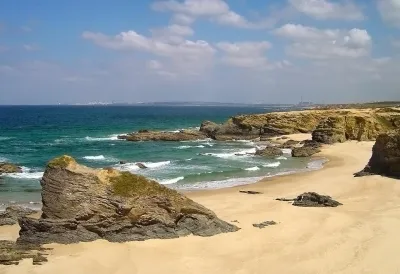
The smallish cove of Praia da Cerca Nova is located just around the northern headland of Porto Covo's main beach. In fact on a low tide it is possible to walk around on the sand.
Despite its proximity to this popular holiday spot Praia da Cerca Nova never gets as busy as its bigger neighbour. This is not to say it is going to be empty in August - it isn't. But given the limited parking or extra 10 minutes walk to get here it is a pleasant escape with a more relaxing feel to it.
Praia de São Torpes
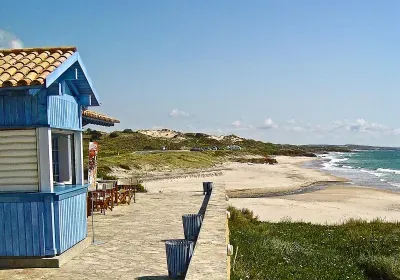
Located just on the outskirts of Sines, the Praia de São Torpes is a Blue Flag award winning beach. It is easy to understand why, or not, depending on which way you look.
Looking south, the sandy beach stretches off into the Southwest Alentejo Natural Park with a backdrop of grassy dunes and the rolling waves of the Atlantic. However, turn the other way and you will struggle not to be a little overwhelmed by the twin towering chimneys of an enormous power plant. And beyond that is the industrial landscape of the petrol refineries and port.
Monsaraz
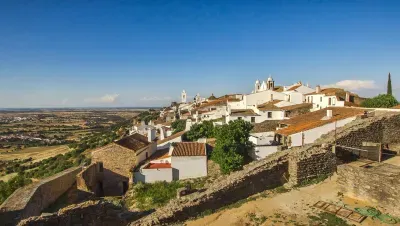
The hilltop village of Monsaraz lives up to its local name of Ninho das Aguias (Eagle's Nest) - perched high above the plains of the Portugal / Spain border the views from here are all encompassing. Although now something of a sleepy backwater this was once a place of great strategic importance, as the fortifications lay testament. To some extent Monsaraz is similar to the region's best known fortified hilltop village, Marvao. However, despite being well worth a visit this little village still remains somewhat off the beaten track.
Praia do Farol
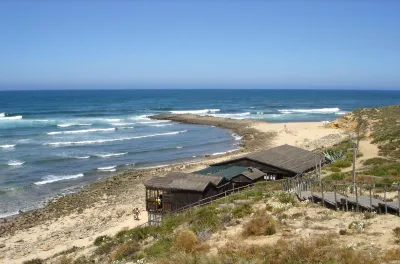
Farol is the Portuguese for "lighthouse" and this is where the Praia do Farol gets its name. The beach wraps around the sandy headland at the mouth of the Mira River which is home to Vila Nova de Milfontes' somewhat underwhelming lighthouse.
Praia das Furnas
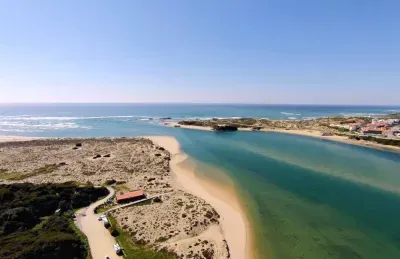
The beach of Praia das Furnas sits across the river Mira from Vila Nova de Milfontes. It could be considered two distinct beaches as it wraps around the coast with one side facing into the calm waters of the Mira estuary and the other into the powerful waves of the Atlantic.
Almograve
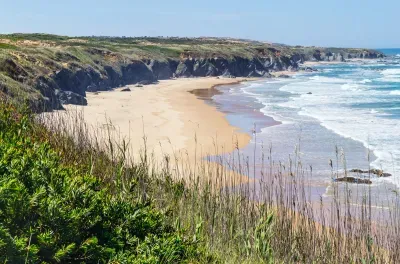
Set about 10 km to the south of Vila Nova de Milfontes is the low-key, little resort of Almograve. The coast around here is fairly rugged with high cliffs and rocky basalt outcrops jutting out into the might of the Atlantic.
Marvão
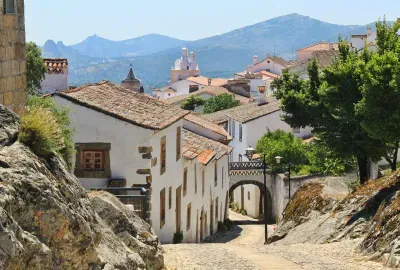
The charming medieval village of Marvão stands out among the other settlements in this area of the Alentejo. It is one of only a handful of remaining towns nestling entirely within its ancient defensive walls. The village is commandingly perched atop a 862 metre (2,800ft) high quartzite looking out over the plains of the Serra de São Mamede and to the Spanish border only a few kilometres away.
Agua de Prata Aqueduct
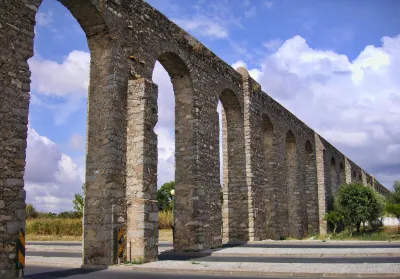
Literally meaning the "Aqueduct of Silver Water", the Agua de Prata Aqueduct is an incredible testament to 16th century engineering. It was built to ensure that the strategically important citadel of Elvira would not run out of clean drinking water during the hot, dry summers. King John III of Portugal appointed Francisco de Arruda, who had built Lisbon's Belem Tower to oversee the project, which took six years to construct, finally opening in 1537.
Castelo de Vide
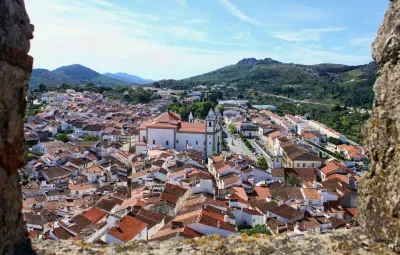
The small town of Castelo de Vide is one of the gems of the Alto Alentejo region. Here a jumble of red roofed, whitewashed houses clings to the side of the lush slopes of the foothills of the Serra de São Mamede. The old quarter has been described as one of the best preserved medieval towns in Portugal and it sometimes feels like life may not have changed much here since those days. What the town might lack in grand monuments it more than makes up for in ambience and charm.
Porto Côvo
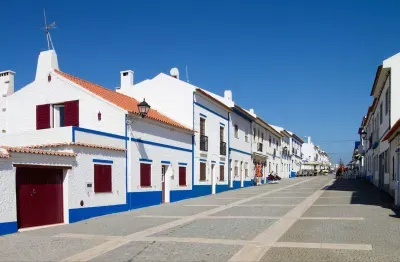
If the archetypal traditional Portuguese fishing village still exists then maybe Porto Côvo is this. Even the name translates as port of the fishing net. A jumble of whitewashed cottages, cobbled streets and pretty squares perched on the low cliff tops of the Alentejo coast between Sines and Vila Nova de Milfontes.